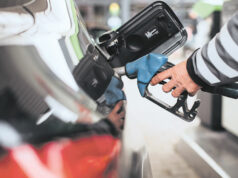The relationship between car manufacturers and customers does not end once a car is bought. It continues as after-sales services — the help and information provided to customers after they purchased an item — are offered. Various technologies are emerging to redefine after-sales service by easing the work of technicians, elevating the experience of customers, and strengthening the connection between car manufacturers and customers.
As technology has always aimed for efficiency in work, it is seen to improve the way technicians do their service through developing technologies.
According to an article by global after-sales service solutions provider Syncron, Inc., published on its Web site, driverless cars allow technicians to multitask, specifically “to use their field service app to ensure the upcoming appointment is as efficient as possible while en-route to the call — reading up on customer history, service part inventory and equipment data — so that the technician walks into the appointment ready to make the repair quickly and successfully.”
Drones are also becoming a tool for technicians “as drones can help them survey large or hard-to-reach areas without putting themselves in dangerous situations. Or, they can be used in warehouses to retrieve service parts,” Syncron wrote.
3D printing is also an emerging technology since it can now print metal parts. This allows spare parts to be produced on the spot, contributing to the reduction of costs and quickening of repairs.
Wearables are another advancement for servicing cars. Jay Kim, chief strategy officer at software company Upskill, gives an example in an interview by Quality Digest’s Ryan E. Day: “The information that a service tech is accessing for the daily routine — reference materials or manuals or a checklist — gets pulled from components within your ERP stack. A technician with a robust wearable solution can retrieve that information, collaborate with a support team, shoot photos and video with the glasses, and then, again via the smart glasses, upload them to the ticket that is associated with the service call.”
On the other side of the chain, customer experience is enhanced. A recent study conducted by Accenture LLP titled “Why Automotive Needs To Re-Haul Aftersales. Now.” has found out that “nearly half of all drivers surveyed (45%) do not want to physically go to a workshop or dealer service location… Instead, they want service to be integrated seamlessly into their daily life.” The aforementioned technologies, in their efficiency, are coming just in time to address such rising demands.
Lastly, technology also strengthens the relationship between manufacturer and end-user. For instance, as Automotive Management reported online, “BMW and Volvo already offer customers the ability to opt in to a connected servicing scheme, which prompts a driver to notify their ‘preferred dealer’ when work is required, just by pressing a touchscreen.”
Indeed, it is apparent how technology is improving the status quo, especially as it penetrates the vehicle after-sales service. Soon, these advancements shall enhance the means by which manufacturers stay connected to their customers after their cars are dispatched. — Adrian Paul B. Conoza



